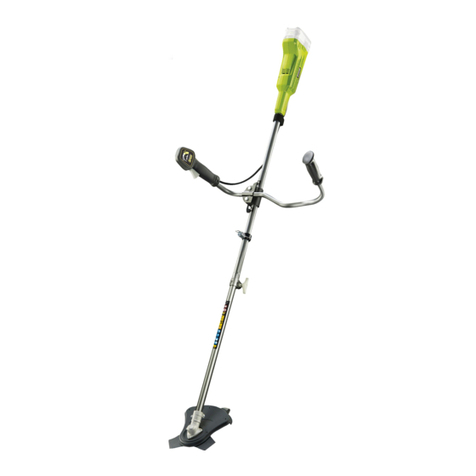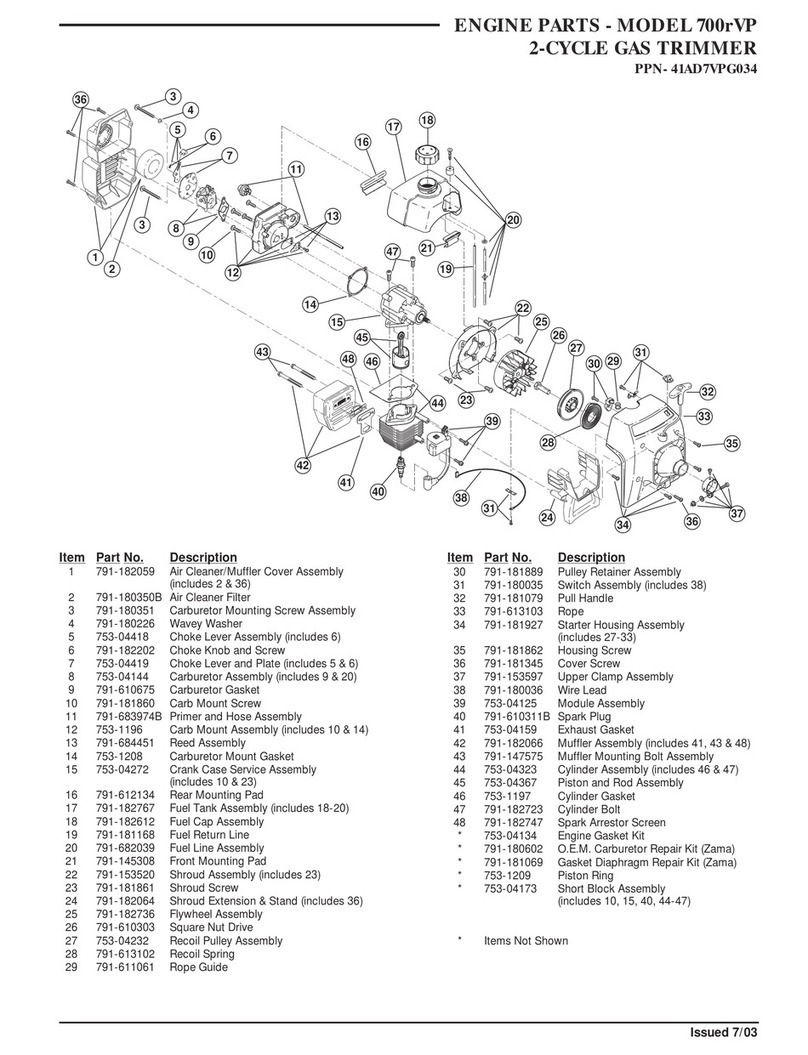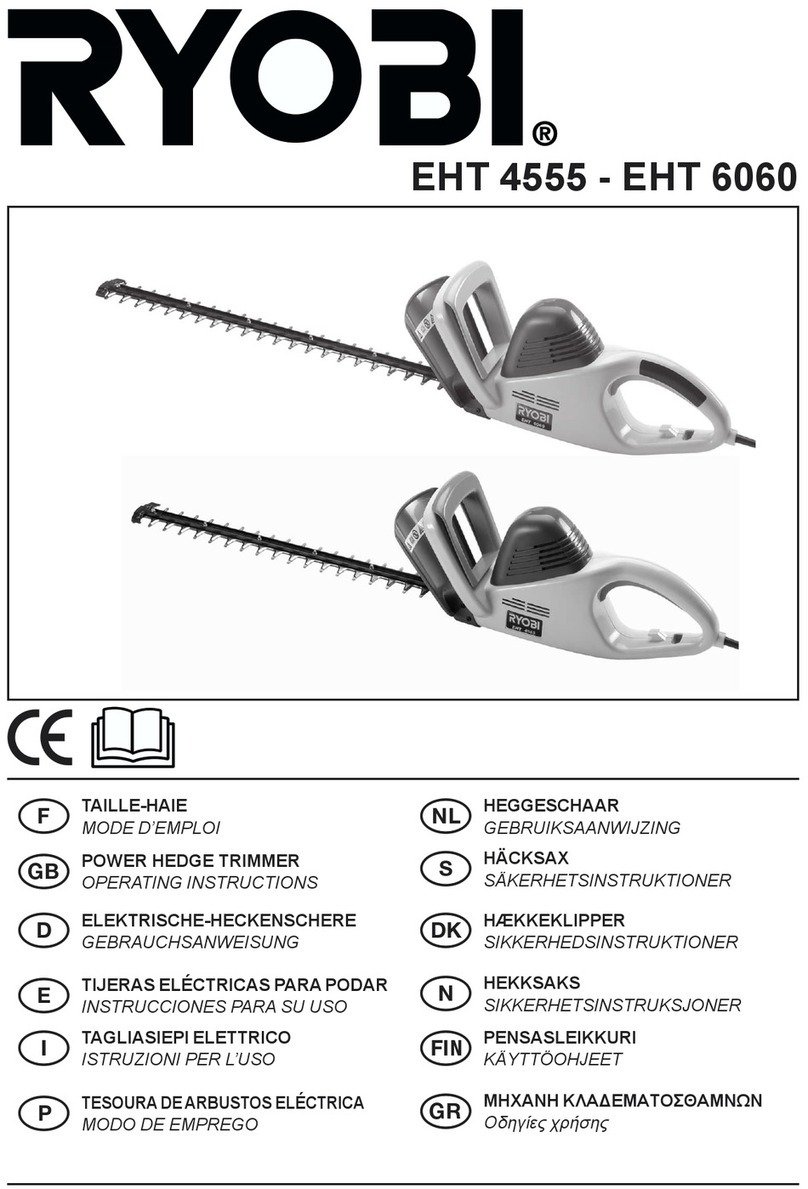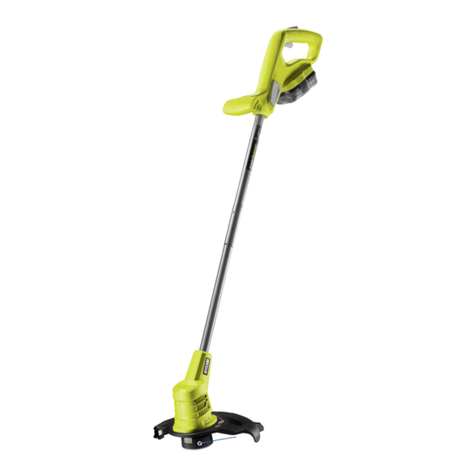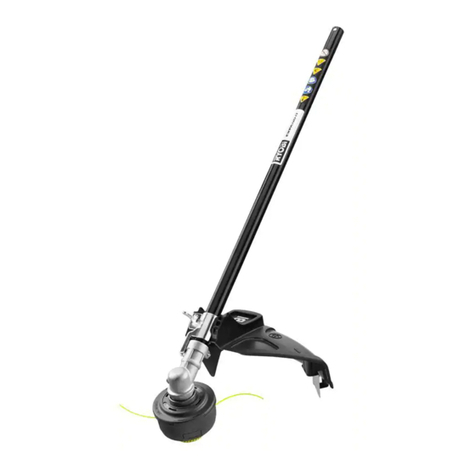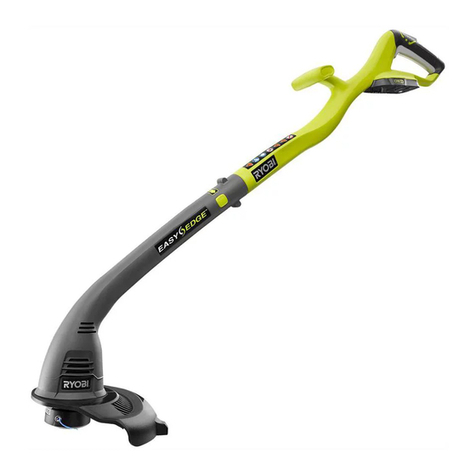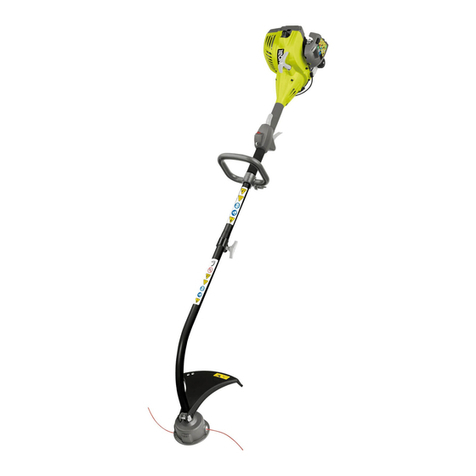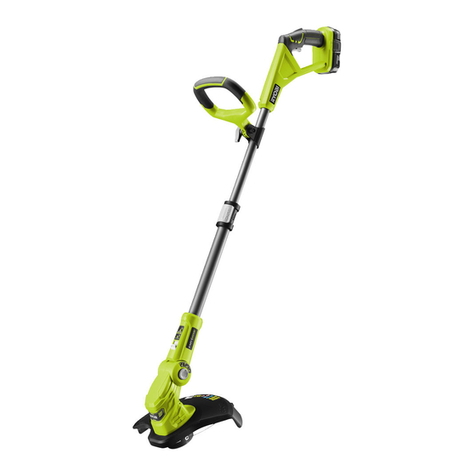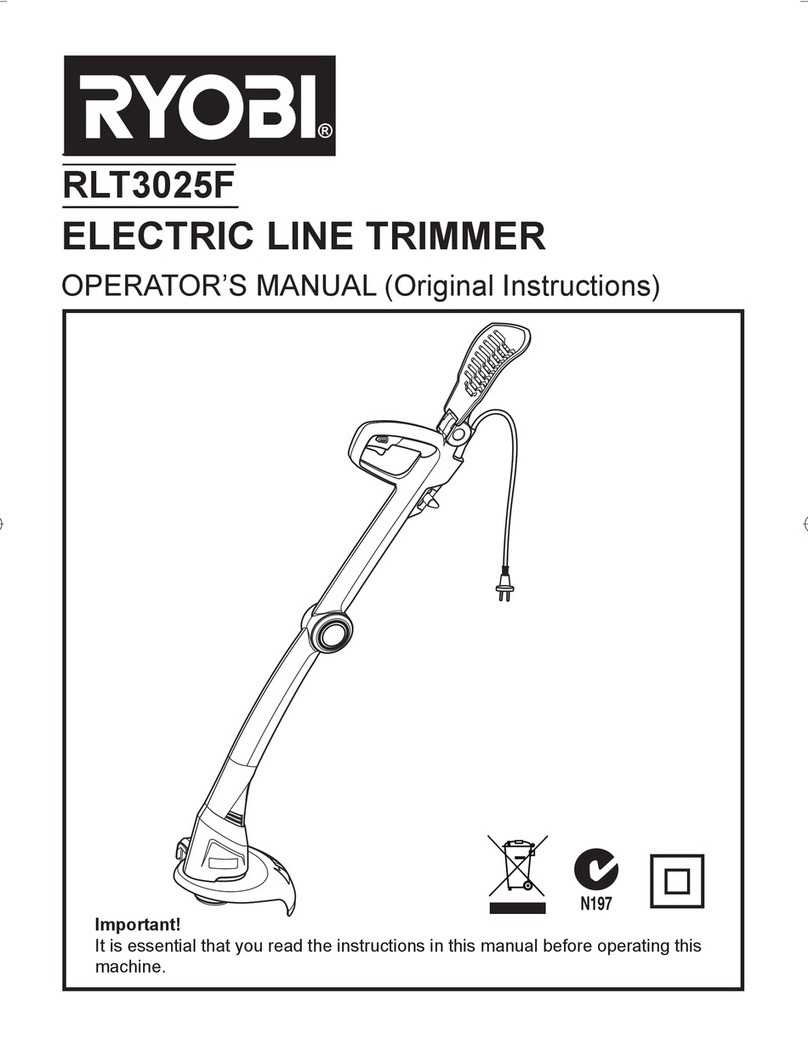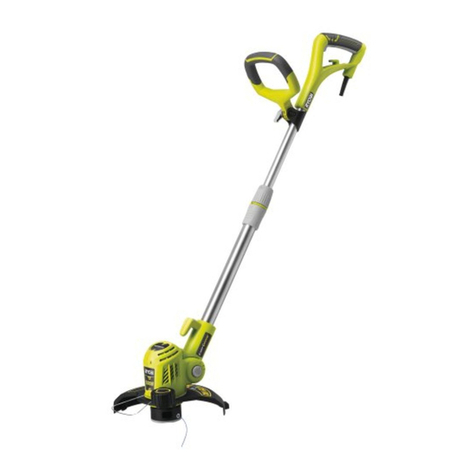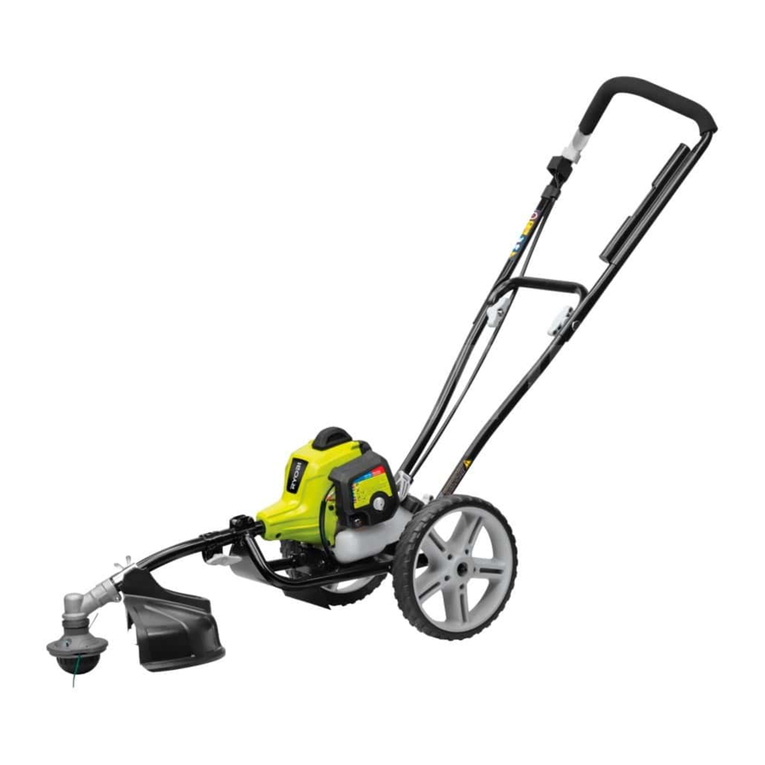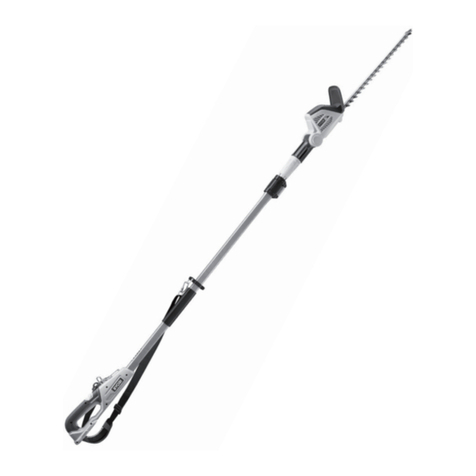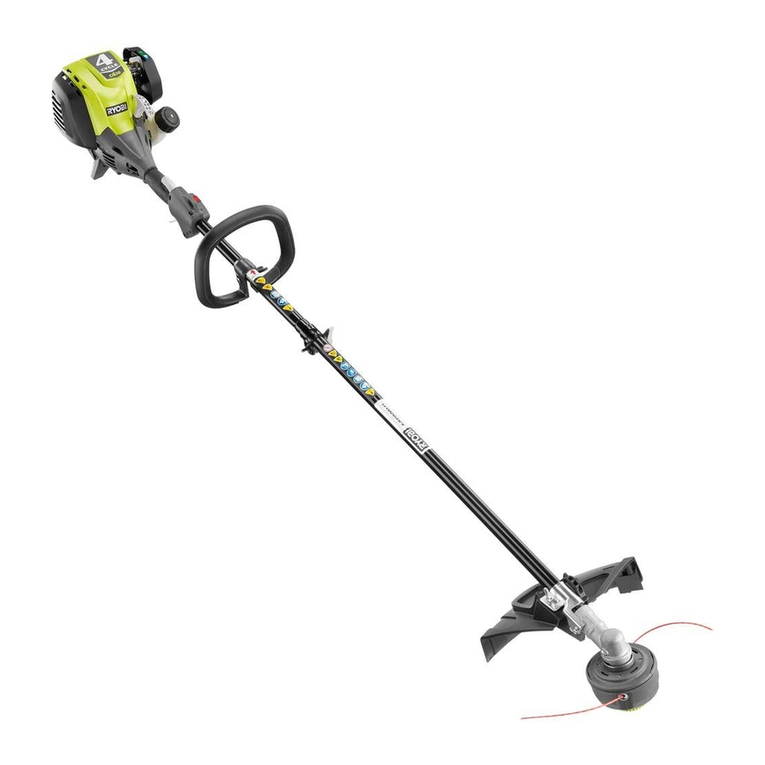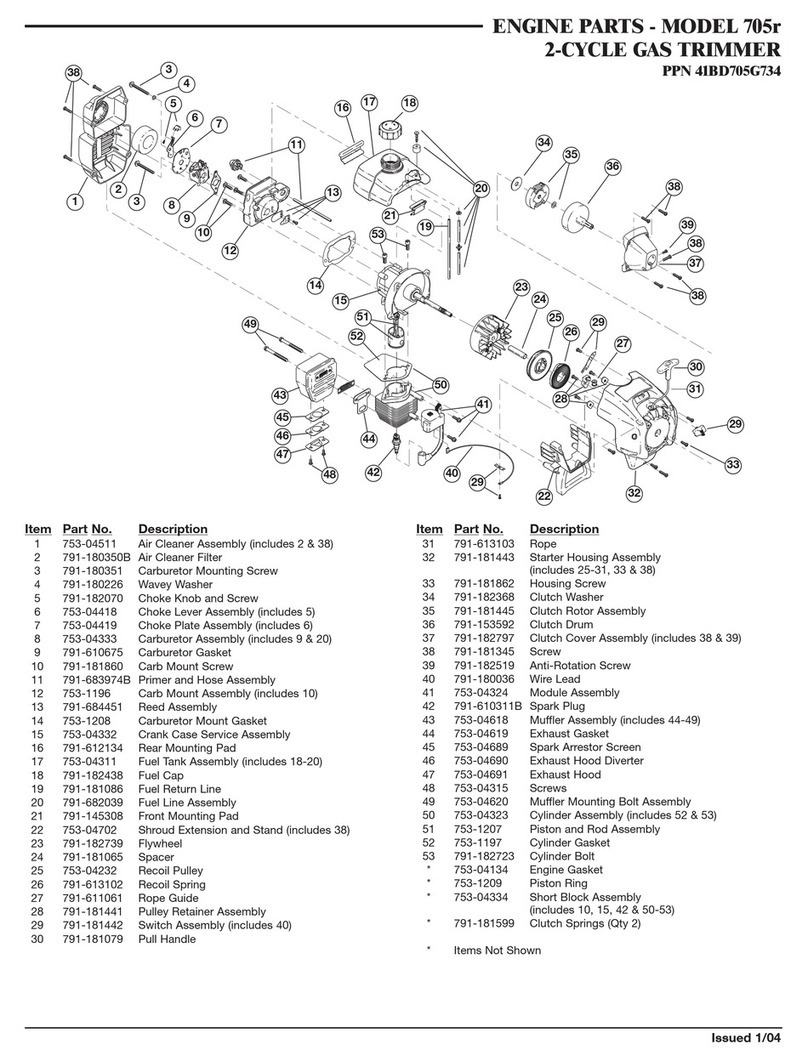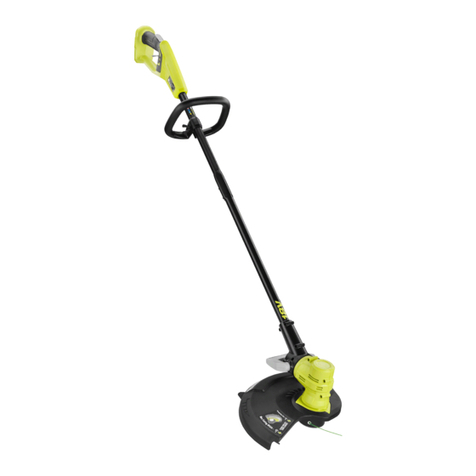
4
■When cutting brush or saplings that are under
tension, be alert for spring back. When the tension
in the wood fibres is released, the brush or sapling
may strike the operator and/or throw the machine out
of control.
■Use extreme caution when cutting brush and
saplings. The slender material may catch the blade and
be whipped toward you or pull you off balance.
■Maintain control of the machine and do not touch
cutters, lines or blades and other hazardous moving
parts while they are still in motion. This reduces the
risk of injury from moving parts.
■Carry the machine with the machine switched off
and away from your body. Proper handling of the
machine will reduce the likelihood of accidental contact
with a moving cutter, line or blade.
■When transporting or storing the machine, always
fit the cover on metal blades. Proper handling of the
machine will reduce the likelihood of accidental contact
with the blade.
■Only use replacement cutters, lines, cutting heads
and blades specified by the manufacturer. Incorrect
replacement parts may increase the risk of breakage
and injury.
■When clearing jammed material or servicing the
machine, make sure the switch is off and the battery
pack is removed. Unexpected starting of the machine
while clearing jammed material or servicing may result in
serious personal injury.
ADDITIONAL SAFETY WARNINGS
■Before use and after any impact, check that there are no
damaged parts on the product. A defective switch or any
part that is damaged or worn should be properly repaired
or replaced by an authorised service centre.
■The small blade fitted to the lawn guard is designed to trim
the newly extended line to the correct length for safe and
optimum performance. The blade is very sharp. Do not
touch the blade, particularly when cleaning the product.
■Use only the manufacturer’s replacement cutting line.
Do not use any other cutting attachment.
■Make sure that the cutting attachment is properly
installed and securely fastened.
■Never operate the product unless all guards, deflectors,
and handles are properly and securely attached.
■Ensure that the line cut-off blade in the guard is properly
positioned and secured before each use.
■Keep the head attachment below waist level.
■Immediately turn off the product and remove the battery
pack in the event of an accident or a breakdown. Do not
operate the product again until it has been fully checked
by an authorised service centre.
■To reduce the risk of injury associated with contacting
moving parts, always turn off the product, remove the
battery pack, and allow both to cool down. Make sure
that all moving parts have come to a complete stop:
●before servicing
●before clearing a blockage
●before checking, cleaning, and working on the
product
●before changing accessories
●after striking a foreign object
●whenever leaving the product unattended
●whenever performing maintenance
●whenever the product starts to vibrate abnormally
■Ensure that all guards and handles are properly fitted
and are in good condition.
■Hold the product by designated handles, and restrict
working time and exposure.
■Beware of objects thrown by the cutting means. Clear
debris like small stones, gravel, and other foreign objects
from the work area before starting operation. Wires or
string may become entangled with the cutting means.
■Always ensure that ventilation openings are kept clear
of debris.
■Injuries may be caused, or aggravated, by prolonged
use of a product. When using any product for prolonged
periods, ensure that you take regular breaks.
■Operate the product only in temperatures between 0°C
and 40°C.
■Store the product in a location where the ambient
temperature is between 0°C and 40°C.
ADDITIONAL BATTERY SAFETY WARNINGS
To reduce the risk of re, personal injury, and product
damage due to a short circuit, never immerse the product,
battery pack, or charger in uid or allow uid to ow inside
them. Corrosive or conductive uids, such as seawater,
certain industrial chemicals, and bleach or bleach-containing
products, etc., can cause a short circuit.
■Charge the battery pack in a location where the ambient
temperature is between 10°C and 38°C.
■Store the battery pack in a location where the ambient
temperature is between 0°C and 40°C.
■Use the battery pack in a location where the ambient
temperature is between 0°C and 40°C.
TRANSPORTATION AND STORAGE
■Turn off the product, remove the battery pack, and allow
both to cool down before storing or transporting.
■Remove all foreign materials from the product.
■Do not store or transport the product with the battery
pack fitted. Remove the battery pack, and secure it
separately. Store the product in a cool, dry, and well-
ventilated place that is inaccessible to children. Keep
the product away from corrosive agents, such as garden
chemicals and de-icing salts. Do not store the product
outdoors.
■For transportation in vehicles, secure the product
against movement or falling to prevent injury to persons
or damage to the product.
TRANSPORTING LITHIUM BATTERIES
■Transport the battery pack in accordance with local and
national provisions and regulations.
■Follow all special requirements on packaging and
labelling when transporting batteries by a third party.
Ensure that no batteries can come in contact with other
batteries or conductive materials while in transport by
protecting exposed connectors with insulating, non-
conductive caps or tape. Do not transport batteries
that are cracked or leaking. Check with the forwarding
company for further advice.
